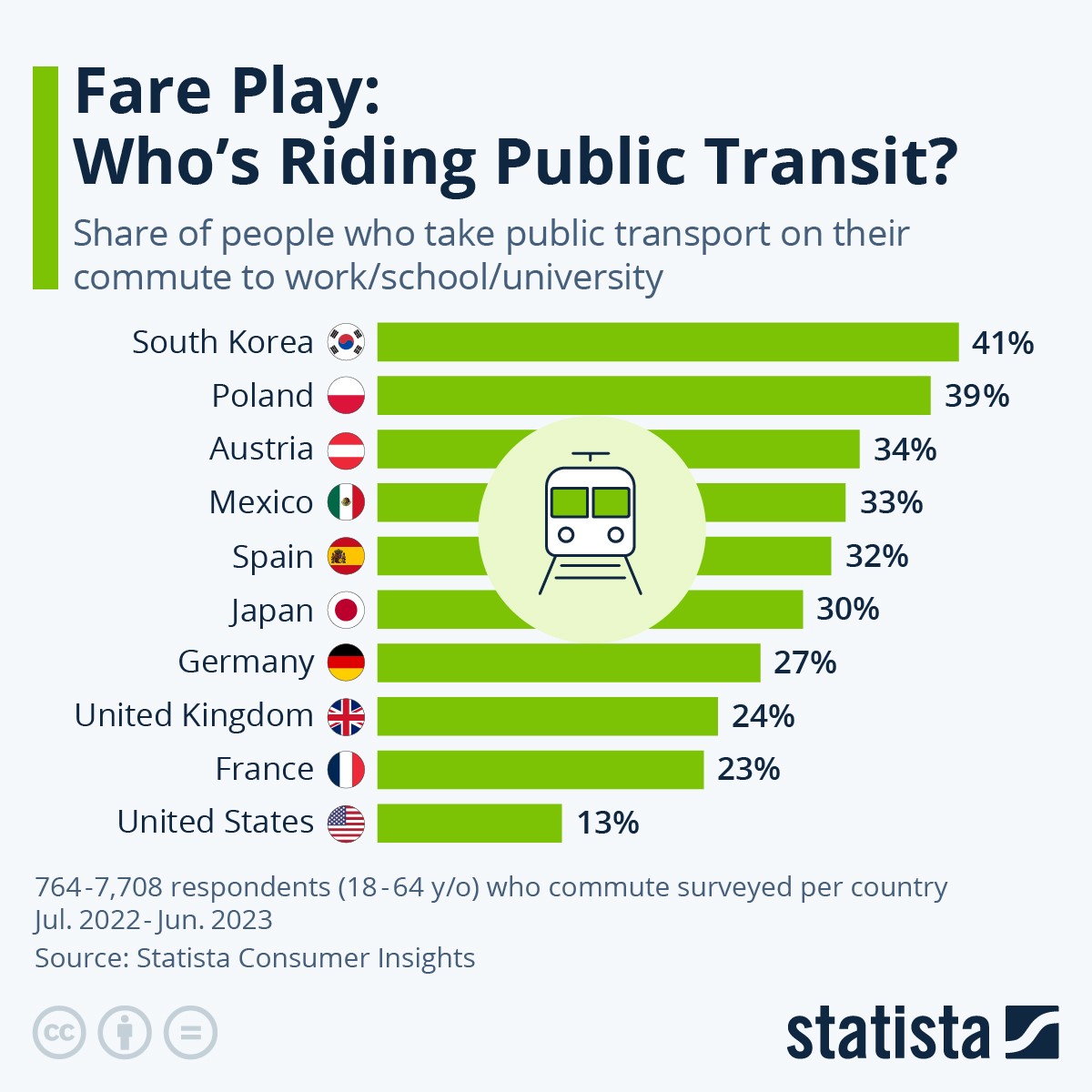Public transport is a well-established concept. Horse-drawn carriages have been used for hundreds of years as an early form of Western public transportation. Eventually, with the rise of railroads, public transportation became a lot faster and able to move many more people over wider distances.
Today, public transportation has many forms, including city buses, trams, light rail, passenger trains, underground, and so on. Even over water, ferries provide public transportation services, such as New York’s famous Staten Island ferry. In densely populated major urban areas, there’s usually a lot of public transportation options, while city-to-city connections via coach buses and intercity rail, including high-speed rail, exist as well.
While public transportation networks exist in the US, they’re used more often in other countries, as the following statistic shows:

(Source: statista.com)
Especially in very densely populated countries, such as South Korea, public transit makes a lot of sense, and if sufficient investments have been made to build out efficient and powerful public transportation infrastructure, many are willing to utilize it.
AI will help make public transportation more attractive, more efficient, and less costly in the future. Optimizing networks with real-time data is possible thanks to artificial intelligence, for example. When traffic patterns are different from how they are usually, e.g. due to a major concert or sporting event taking place somewhere in the city, AI can help optimize the city’s resources by having additional underground trains run in a particular direction, or by supplying additional options, such as buses as substitutes for trains that are running at full capacity.
If any problems with the public transportation infrastructure emerge, traffic controllers can use AI to find solutions that are most practical, while customers that could be impacted can be identified and informed quickly. Giving riders quick and precise information about when a bus or train will arrive or depart, or if there will be any delays, is also made possible thanks to AI that uses data collected in real time.
Artificial intelligence also helps city planners optimize public transportation infrastructure in the planning stage by analyzing different scenarios and forecasting how traffic flow could change over the years.
How To Benefit from Public Transport Modernization
Investors can choose among some of our Artificial Intelligence picks to benefit from this expanding MegaTrend:
NVIDIA (NASDAQ: NVDA) remains the leading AI chip company in the world. At companies, institutions, and in government facilities, NVIDIA’s chips are used to analyze data quickly in order to make predictions, recognize patterns, and so on. AI users in the public transportation sector will stick with the chips that work best, and those are the ones that NVDA is selling.
While not as well-known as NVDA, Qualcomm (NASDAQ: QCOM) is another attractive chip company for investors seeking to benefit from the AI trend. Qualcomm holds a wide range of 3G, 4G, and 5G (and 6G!) patents and benefits from more and more sensors that communicate with each other. To improve public transportation, more sensors that communicate more quickly will be important so that algorithms have sufficient up-to-date data.
Because public transportation infrastructure is critical and sensitive to potential cyberthreats, cities and governments will likely invest substantial sums of money to harden these assets against potential threats. Palo Alto Networks (NASDAQ: PANW) is active in the intersection between AI and cybersecurity, and may well be a big beneficiary of this growing MegaTrend.

